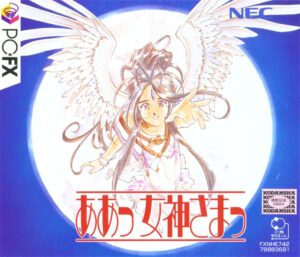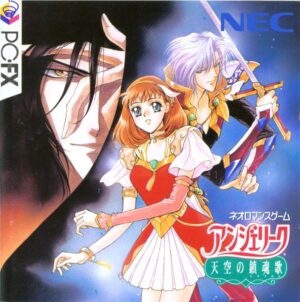Retro Replay Review
Gameplay
Megami Tengoku II offers a unique blend of life-simulation and light RPG mechanics wrapped in an anime-inspired top-down world. You guide one of eight shrine maidens—four aligned with the benevolent goddess Mamamega and four pledged to the dark goddess Yamimama—on a quest to amass followers across a vast, magical land. Each maiden has her own stats and specialty, encouraging you to experiment with different characters and playstyles.
(HEY YOU!! We hope you enjoy! We try not to run ads. So basically, this is a very expensive hobby running this site. Please consider joining us for updates, forums, and more. Network w/ us to make some cash or friends while retro gaming, and you can win some free retro games for posting. Okay, carry on 👍)
Exploration plays a central role, as you navigate towns, forests, and sacred grounds in search of recruits. Dialogue choices—ranging from sweet to passionate—determine how successfully your maiden convinces citizens to join her cause. You can switch between maidens on the same side at any time, allowing you to deploy the best speaker for each situation, but you cannot cross over to the opposing camp’s roster.
A dynamic day/night cycle adds strategic depth. Certain shops, NPCs, and mini-games are only available at specific times, so you must plan your movements carefully to optimize recruitment. All this activity unfolds within a one-year in-game time limit, meaning your decisions carry weight: do you spend the evening buying new costumes to boost charm, or spar in a slot-machine battle to improve your stats?
Graphics
The visual style of Megami Tengoku II leans heavily on late-90s anime aesthetics, with bright, colorful 2D sprites and character portraits that capture the personalities of each shrine maiden. Background tiles are detailed without being overwhelming, evoking a whimsical world of floating islands and ornate shrines. Even on a modest hardware setup, the game’s hand-drawn assets maintain clarity and charm.
Character animations are simple but expressive. When your shrine maiden engages in conversation, her sprite shifts subtly—eyes widen, hair sways—to reflect different dialogue choices. Special effects, such as invocation animations when recruiting new followers, are punctuated by vibrant bursts of light and pastel trails, reinforcing the game’s magical theme.
The user interface is clean and intuitive. Menus for equipping items, changing outfits, and managing stats use straightforward icons and color codes to indicate rarity or effectiveness. Battle screens—centered around the slot-machine mini-game—feature clear win/lose indicators and animated reels that spin with satisfying jingle effects, making these encounters feel like a light diversion rather than a chore.
Story
Megami Tengoku II stands apart from its predecessor by presenting a new narrative rather than a direct sequel. The core conflict pits Mamamega, the light goddess who rules with benevolence, against Yamimama, her dark counterpart who seeks to overthrow her throne. This duality sets the stage for the entire adventure, giving each shrine maiden a clear allegiance and motivation.
Each of the eight characters receives a brief backstory that color-codes their loyalty and explains their personal stakes in the divine struggle. Though the overall plot is straightforward—gather more followers than the rival camp before time runs out—the individual interactions and branching dialogue paths add depth and replayability, especially if you switch between maidens to uncover side anecdotes.
While the narrative focus remains on recruitment rather than epic battles or dramatic twists, there are small vignettes interspersed throughout your journey. Townsfolk share rumors of rare magical artifacts, rival shrine maidens show up unannounced for a spirited debate, and even the deities themselves make occasional appearances to reward or rebuke your progress, keeping the story world feeling alive.
Overall Experience
Megami Tengoku II delivers a refreshing spin on genre conventions by blending simulation, light RPG elements, and mini-games set in a richly realized anime universe. Fans of the original Megami Paradise anime will appreciate the faithful character art and thematic continuity, even though the story diverges entirely from the first game. Newcomers looking for a non-violent, strategy-driven experience will find the recruitment mechanics both charming and surprisingly deep.
That said, the one-year time limit and the reliance on slot-machine battles may not appeal to everyone. Players who prefer fast-paced action or complex combat systems might find the mini-games repetitive over extended play sessions. However, the ability to swap your shrine maiden and tailor dialogue approaches gives a degree of customization that mitigates any monotony.
Overall, Megami Tengoku II stands as a niche gem for aficionados of anime-style storytelling and light strategic gameplay. Its combination of heartfelt character interactions, strategic time management, and whimsical visuals make it a worthwhile addition to any collection—especially if you’re eager to explore a world ruled by rival goddesses and their charming, determined attendants.
 Retro Replay Retro Replay gaming reviews, news, emulation, geek stuff and more!
Retro Replay Retro Replay gaming reviews, news, emulation, geek stuff and more!









Reviews
There are no reviews yet.